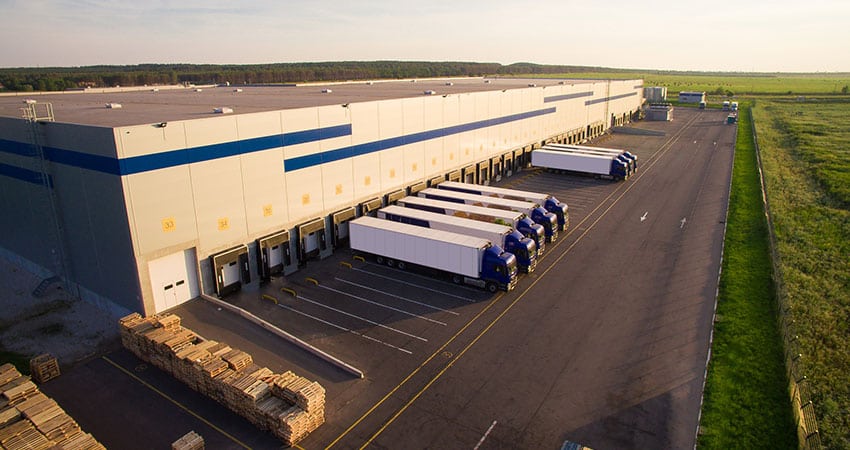Fueled by continued growth in e-grocery and the sector overall, food and beverage saw more growth in terms of major warehouse leases in 2019 than did ecommerce, which slipped a bit, according to a report from CBRE on the 100 largest deals of the year.
In 2019, there were 13 warehouse leases totaling 13 million square feet in CBRE’s top 100 for food and beverage, which is largely made up of cold storage space as well as food processing, compared to 9 leases totaling 8.8 million square feet in 2018. By comparison, there were 34 deals for ecommerce fulfillment and distribution centers totaling 30.8 million square feet, down from 41 and 43.1 million square feet the prior year.
3PL activity saw 20 warehouse deals in the top 100, the same as in 2018, but the total square footage dropped from 18.3 million to 15.8 million square feet. Overall, the industrial and commercial vacancy rate stood at 4.4% as of Q4 2019, according to CBRE. This figure includes vacant space plus space that is currently occupied but being marketed in anticipation of a move-out.
Matthew Walaszek, associate director of research Americas in industrial logistics for CBRE, said the results for food and beverage were not surprising, given the growth and investment in the space.
“We’re seeing the growth due to expansion of ecommerce as a lot of grocery companies move toward online fulfillment,” Walaszek said. “Food sales in general are growing exponentially, and they need a lot more cold storage capacity. It’s an indicator to us it’s certainly a subsector to watch.”
Walaszek said while the number of major ecommerce warehouse deals did slip a bit, it was mostly a function of fewer megadeals than in 2018, not a broader slowdown in demand. “We’re continuing to see ecommerce expand and have a huge impact,” he said. “Keep in mind this is just the top 100 deals but it’s a good barometer of the overall market. Ecommerce and 3PLs represent a lot of activity.”
In terms of major markets, CBRE reported that California’s Inland Empire again saw the most megadeals, with 21 leases totaling 17.5 million square feet. This was followed by Pennsylvania’s 1-78/I-81 corridor (8 deals, 7.5 million square feet); Memphis (9 deals, 6.9 million square feet); Dallas-Fort Worth (7 deals, 6.1 million square feet); and Atlanta (6 deals, 5.4 million square feet).
“There’s always a ton activity in the Inland Empire and in central Pennsylvania, as they’re both serving major population centers on both coasts,” Walaszek said. “Memphis is interesting, as it was not in the top five last year. It’s not a market we’d necessarily consider top tier, although we are seeing a lot of big-box deals lately. It’s definitely one to watch.”
At the other end of the market, there continues to be a lot of activity in facilities under 100,000 square feet, Walaszek said, as retail and ecommerce companies realign their supply chains to move ever closer to demand centers and shrink time to customer.
“Yes, we’re seeing huge demand for smaller footprints as companies look to have more sites in strategic locations close to populations, urban and suburban in this environment of speedy delivery,” he said. “However, there’s limited availability when you get down to 40,000 or 50,000 square feet, much less than in the big-box sector, so it’s a challenge for companies to find these types of facilities.”

